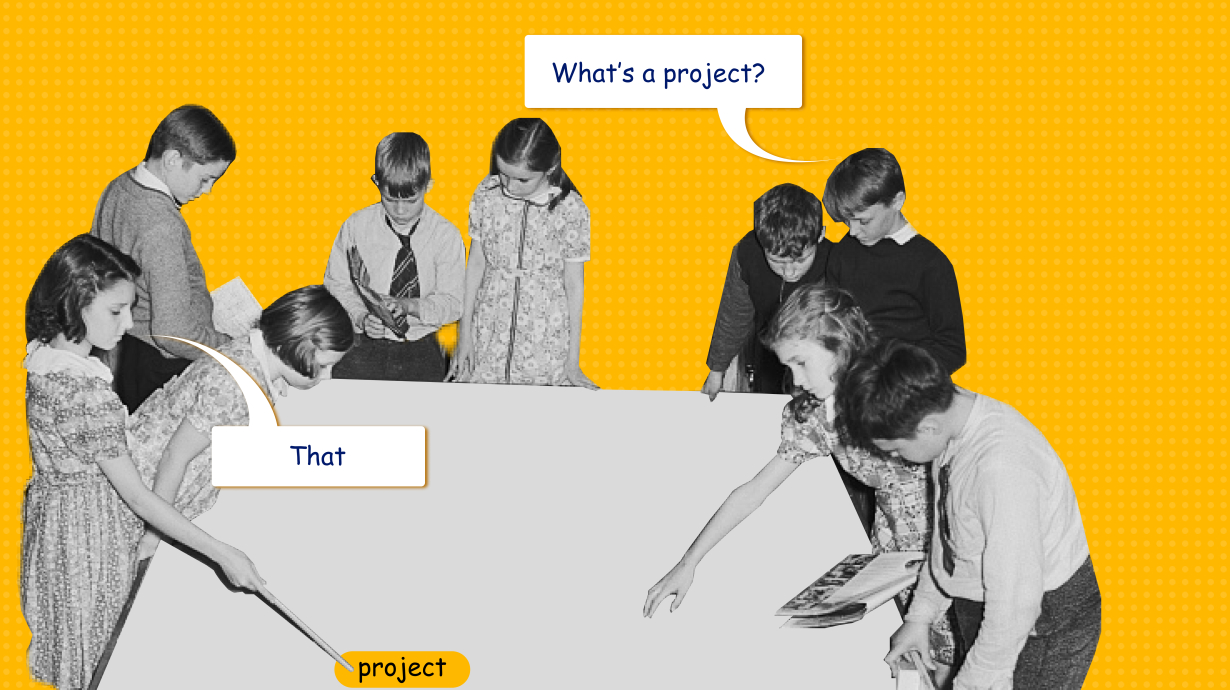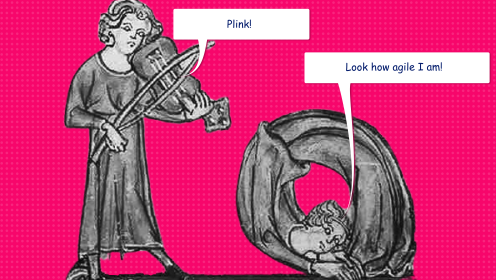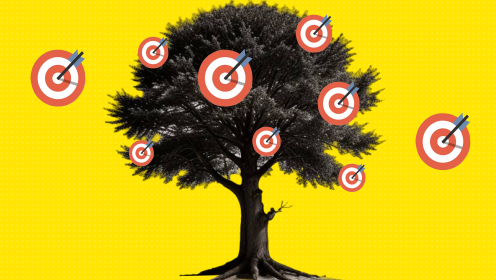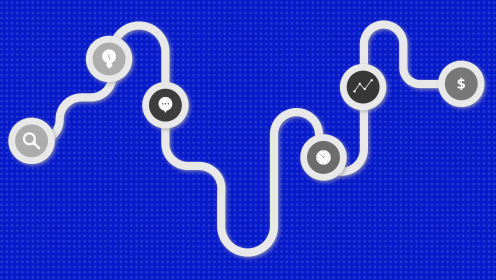Here begins a series on project management—and, we hope, your journey into project management with WEEEK.
In this series, we’ll explore what defines a project and a task, examine their interconnections, and break down the essential components and responsibilities at every project stage.
Project ➡️ Project Program ➡️ Project Portfolio
What Is a Project
According to the PMBOK Guide to project management, a project is a temporary endeavor with the purpose of creating a unique product, service, or result.
Let’s clarify further.
📌 A project is a process comprising a series of actions and tasks directed toward achieving a specific goal. It has defined timelines, requires allocated resources, aims to deliver value, and involves risks.
Projects often start with the desire to achieve growth or improvement. They drive progress, add value, and ideally, bring benefits to all parties involved.
External factors also influence the decision to start a project—market shifts, competitor developments, client demands, or customer requirements.
In this sense, a project can be practically anything:
- constructing a bridge, building, or backyard sauna
- adding new features to a digital product
- merging organizations or opening a new branch
- launching a coffee shop
- conducting research
- expanding a range of services or products
- organizing an event like a race, conference, or birthday
- renovating a house
- really—almost anything
At first, any project may seem large and intimidating—until it’s broken down into manageable parts and structured into a plan of specific tasks.
What Makes a Project Different from a Task
A project is a comprehensive entity defined by six key variables:
- Timeline — the project’s deadline
- Scope — the core objective of the project
- Budget — the funds allocated for its execution
- Risks — potential challenges that might arise
- Value — the benefits generated for the world, business, and creators
- Team — the people responsible for bringing the project to life
Managing these variables is essential in any project and sets it apart from a task.
A task is a measurable, specific, time-limited step within a project, something achievable here and now, for instance, within a single workday. A project’s final outcome is the sum of its completed tasks.
A large project is broken down into smaller, manageable steps, or tasks, which simplifies the process and makes the project easier to control and manage.
Why Project Management Was Created
People have practiced project management for centuries.
Building pyramids, planting fields, constructing forts, passing new laws—all of these are projects. To make them successful, everyone needed to coordinate, follow shared guidelines, resolve issues, and align results with leaders like the pharaoh, a ship’s captain, or a village elder.
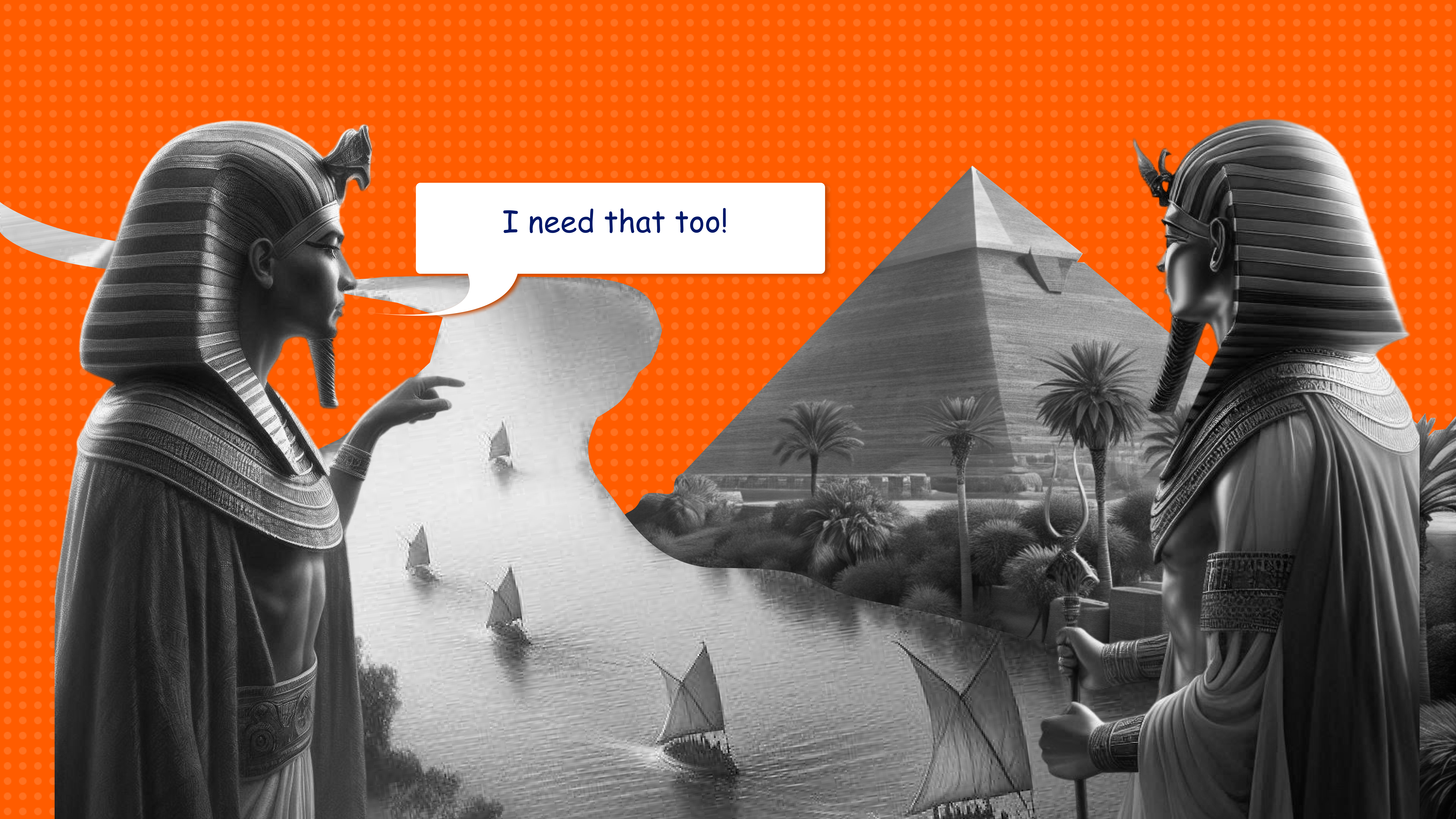
These early project managers likely thought about working more efficiently—how to avoid redoing work and make similar future efforts less time-consuming and strenuous.
The first scientific approach to managing projects came in the 19th century from American machinist Frederick Taylor. Taylor’s revolutionary idea was that work efficiency doesn’t depend solely on the hours worked but on optimizing collective efforts and identifying the basic components of tasks to tackle them more effectively. This marked the start of a management theory known as Taylorism.
Taylor’s journey with these innovative ideas must have been challenging, but his approach found followers. Project management gradually developed into a practical discipline, first within engineering companies and later spreading across various industries.
In the 1970s, the United States established the Project Management Institute (PMI), which began training managers, issuing certifications, and publishing the PMBOK—an extensive project management guide often referred to as the "Bible" for project managers.
📌 It’s fair to say that project management was born from the very nature of projects—their complexity and multifaceted demands—and from people’s desire to achieve better results.
After all, Taylor focused on improving the quality of work, reducing errors, increasing motivation, and ultimately gaining greater benefits—a win-win strategy for both businesses and employees.
Today, every successful business relies on a project-based approach. It allows for the efficient management of various project components at the same time, capturing the true essence of project management.
What Is Project Management
Let’s quickly review what defines a project—it consists of six key variables:
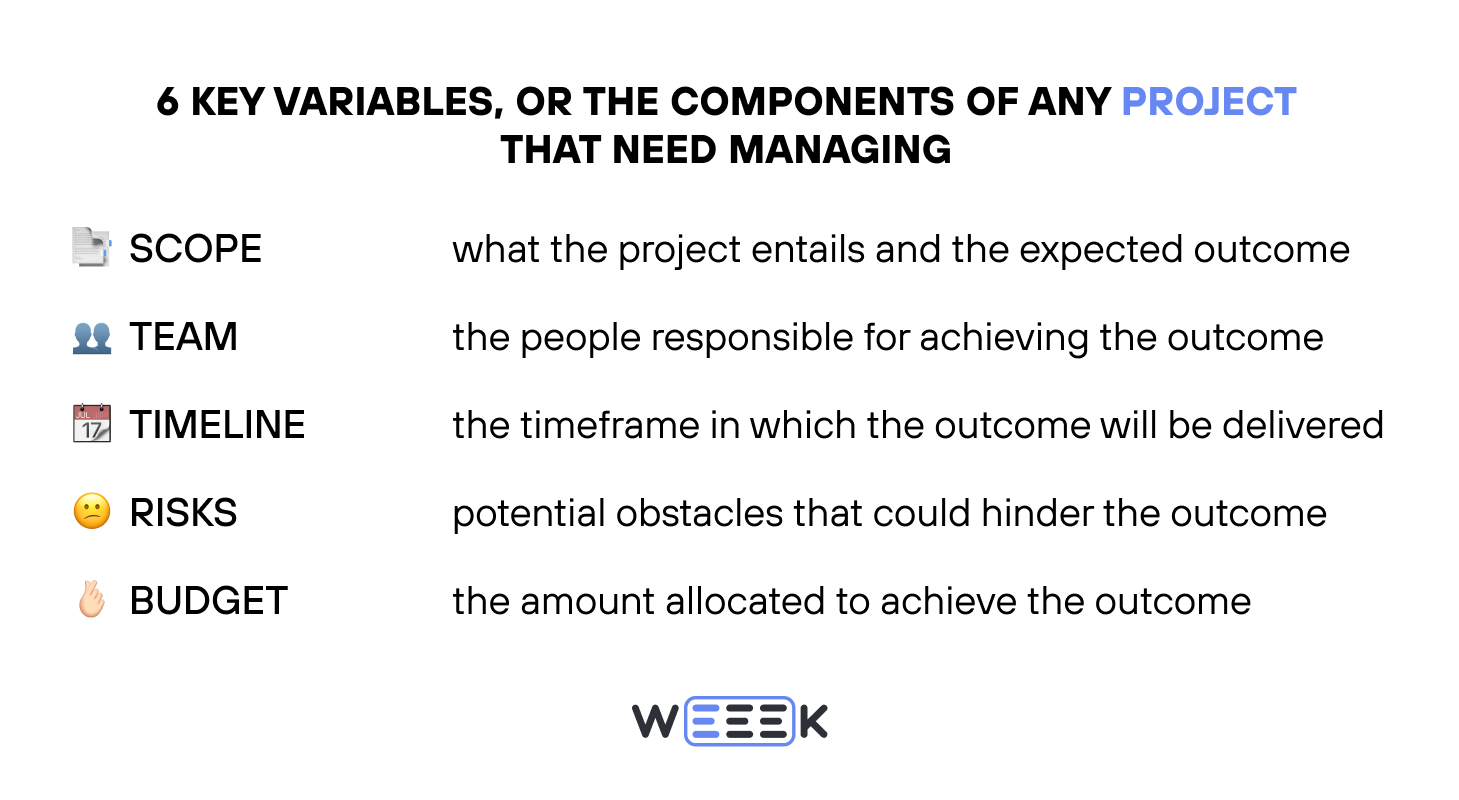
Managing these six variables is the essence of project management across the project’s lifecycle.
According to PMI’s classic model, a project moves through five stages: initiation, planning, execution, monitoring, and closure.
Here, we’ll simplify and look at project work head-on. What stages are essential, every time, without exception? Project planning, task execution, and process and outcome monitoring.
Project Planning
This is where a project begins—by shaping its purpose through discussion. Ideas are transformed into an actionable plan and clear objectives.
☝️ Key Management Tasks
The client submits a request, the project manager builds a team, identifies stakeholders, defines project scope, sets goals, and envisions the final outcome. A preliminary plan is created, risks are evaluated, a rough timeline is sketched out, and a decision is made on whether to proceed with the project.
This stage involves team and client meetings, market analysis, and assessment of the company’s current status. Key artifacts are generated 👇
📁 Deliverables at This Stage
- Project Documentation — including the project charter, business case, project concept, and summary
- Expected Benefits — a list of desired outcomes
- Risk Assessment — such as a risk matrix, risk register, SWOT or PEST analysis, and market research insights
- Team — a roster of stakeholders and participants, with roles and responsibilities (often organized with RACI/DACI matrices)
- Budget — typically a preliminary estimate
- Initial Plan — usually high-level, such as a roadmap or initial work breakdown structure (WBS)
Project Execution
In this phase, the team actively works toward project goals. This marks the second major phase.
☝️ Key Management Tasks
First, the team completes tasks, exchanges updates, and produces interim results. Second, there’s ongoing communication with the client, stakeholders, and team members to align expectations and outcomes. Third, all parties assess progress toward the goal together.
📁 Deliverables at This Stage
- Detailed Work Breakdown Structure (WBS) — preliminary plans are refined into a comprehensive outline
- Calendar or Kanban Board — a visual representation of tasks, accessible to all team members, with deadlines and action steps
- Interim Results — outcomes generated by the team
Monitoring Progress and Outcomes
The focus here is on managing risks and ensuring the final outcome meets standards. Although this is formally the third part of project management, it occurs alongside the execution phase and often extends beyond it.
☝️ Key Management Tasks
The team, especially the project manager, proactively addresses and mitigates risks. Simultaneously, the team works to ensure that final deliverables meet quality expectations.
📁 Deliverables at This Stage
Generally, no new documents are created here. Instead, the team works with existing documentation, like risk matrices and satisfaction surveys, refines the project concept, and improves plans as needed.
❗ Once the project is complete, a few final items are generated, including:
- product descriptions
- client documentation and user guides
- a post-project optimization plan
Project Closure
We haven’t yet addressed the closure phase, arguably the most critical part of the project lifecycle.
Delivering a project can be even more challenging than creating it. It’s at this stage that overlooked issues, client dissatisfaction, and mismatched expectations may come to light.
Good management during earlier stages—planning, monitoring, and risk management—helps ease the closure phase. That’s why we treat this stage as distinct from active project management.
Once a project is delivered and closed, it moves to the next level within the organization—becoming part of project programs and portfolios. We’ll explore that in our upcoming texts.
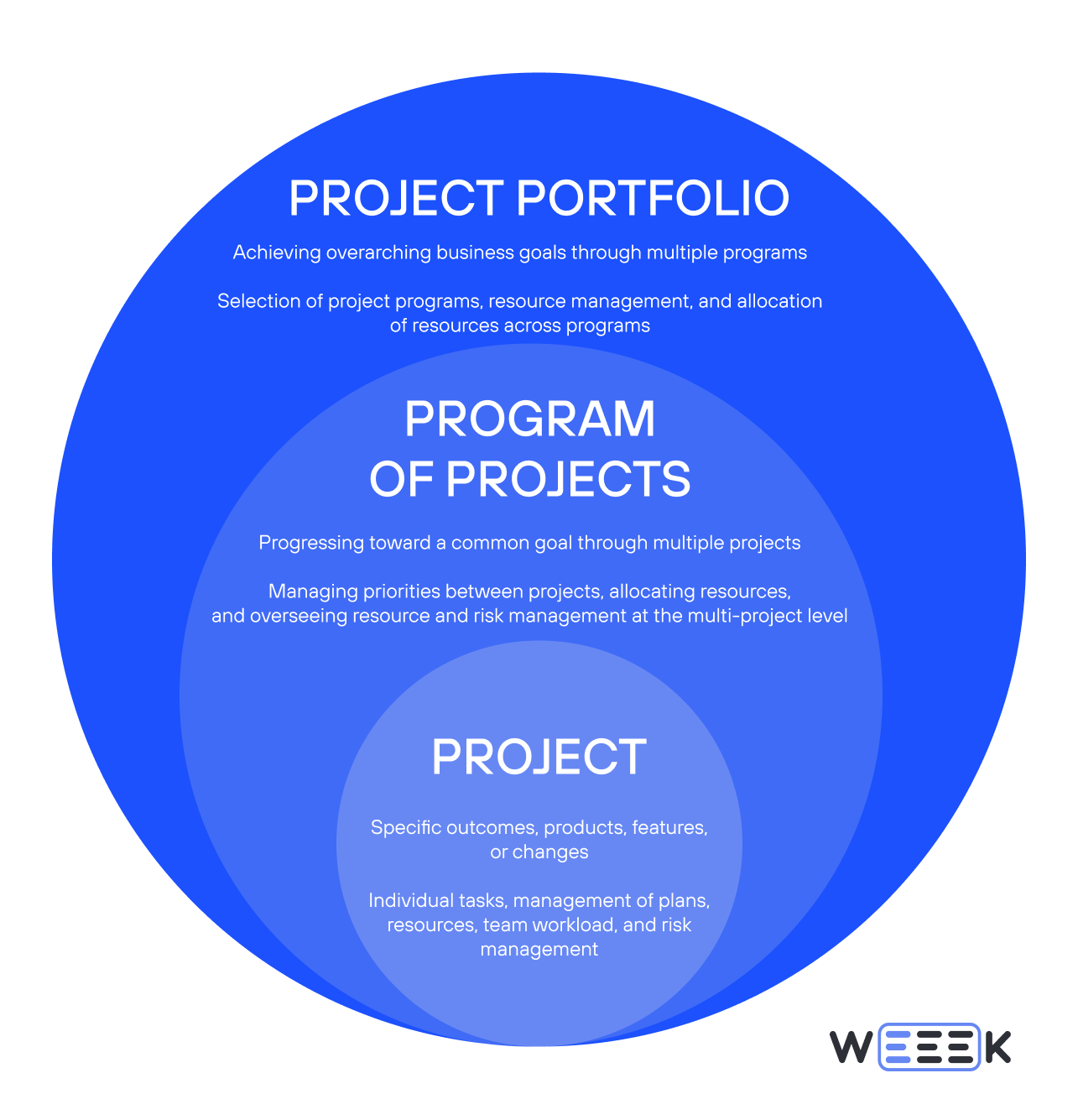
☝️ Once a project is complete, it’s essential for the team to reflect: discuss successes and challenges, identify areas for improvement, and evaluate the overall benefits. This is the final step in project management.
Project Essentials
✔️ A project is a temporary effort aimed at creating a unique product, service, or result
✔️ A task is a component of the project, arising from the breakdown of project plans. Together, tasks form the project
✔️ Projects are designed to add value, drive improvements, or solve specific problems. They are often initiated in response to external factors such as market growth, competition, or client and customer demands
✔️ Effective project management requires control over six key variables: scope, timeline, budget, benefits, risks, and team
✔️ Project management is typically divided into three stages: planning and initiation, task execution, and monitoring progress and results








